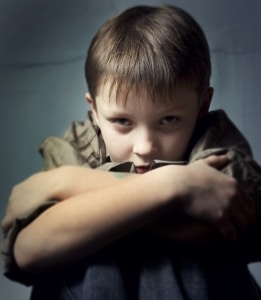By Megan Watson
“Child abuse casts a shadow the length of a lifetime.” – Herbert Ward
Child abuse exists within every community. Many people believe that child abuse only happens in poor, underprivileged communities and/or communities where drug and alcohol abuse are prominent. Although child abuse does happen in these communities, it also occurs in communities where many people least expect. Therefore, it’s important to gain awareness of the signs of child abuse as well as the different types. Only then can we have any hope of preventing it and supporting families to keep their children safe.
Many people are aware of physical abuse, but tend to forget that there are three other types:
Physical abuse: can be defined as intentional use of force resulting in injury. Signs of physical abuse can include unexplained reoccurring injuries, wearing long clothes or refusal to change (e.g. for gym class), chronic running away, fear of medical help or examination, self-destructive tendencies, aggressive behaviour, fear of physical contact, or fear of discipline.
Emotional abuse: can be defined as verbal attacks against the child, repeated humiliation, rejection, and exposure to violence/drugs/alcohol abuse. Signs of emotional abuse can include developmental lags or sudden speech disorders, low self-esteem or constant negative self-talk, overreaction to mistakes, fear of change or the unknown, anxiety, extreme passivity or aggression.
Sexual abuse: can be defined as exposing a child to sexual contact, activity or behaviour. Signs of sexual abuse can include being overly affectionate or knowledgeable about sex, personality changes such as becoming insecure or overly attached, regression of behaviour, appetite changes, becoming isolated or withdrawn, inability to concentrate, lack of trust, toileting difficulties or regression, worries about undressing, hygiene digression, and/or trying to be perfect.
Neglect: can be defined as any lack of care that impedes child development or endangers the child. It can be either physical or emotional. Signs of neglect can include constant hunger or tiredness, poor personal hygiene or state of clothing, untreated medical problems, impoverished social relationships, or destructive tendencies.
By knowing the types and indicators of abuse, it is easier to recognize

and intervene to ensure the safety and well-being of children. If a child tells you about abuse they are experiencing, it is important to:
-
- stay calm and be reassuring
-
- believe them
-
- listen, but don’t press for information
-
- tell them you appreciate them telling you
-
- be open and honest about what action you have to take
-
- seek medical help, if necessary
-
- contact the appropriate services
The only way something can be prevented is to start by gaining awareness of it. It is up to everyone to advocate for children in need of protection.
If you suspect that a child is being abused, it is your responsibility to call:
Social Services Response Team
403-297-2995
or
Child Abuse Hotline

